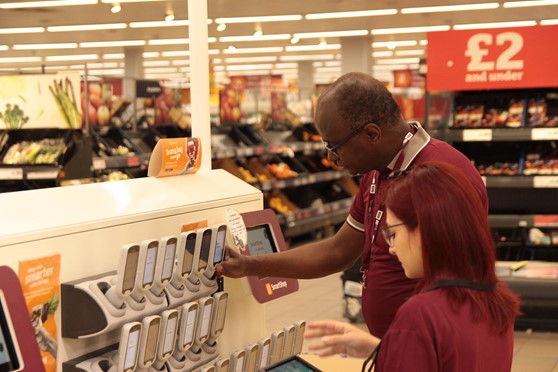Self-Scan Checkouts & Shrinkage Reduction: A Growing Trend in Retail

More and more retailers across the United States are adopting self-scanning technology for their customers. But how is this shift impacting a critical concern for the industry – retail shrinkage? Self-scan checkouts represent a natural progression, moving away from the traditional model of staffed checkout lanes. Just a few years ago, customers relied on staff to hold items or assist with fueling their vehicles. Now, shoppers are increasingly taking on the responsibility of scanning and paying for their purchases directly.
There are primarily two types of self-scanning systems gaining traction:
- Stationary Self-Service Checkouts: These are fixed, self-operated units where customers scan each item and pay at the terminal.
- Portable Self-Service Platforms: Handheld devices allow shoppers to scan items while they browse the store and pay immediately at the end of their shopping experience.
Why Retailers Are Investing in Self-Scan
Several key factors are driving the adoption of self-scanning technology:
- Customer Convenience: Self-scan offers a faster, more flexible shopping experience.
- Increased Staff Efficiency: One supervisor can manage multiple self-scan stations, boosting overall productivity.
- Reduced Labor Costs: Retailers can potentially reduce recruitment and wage expenses.
- Competitive Advantage: Implementing self-scan demonstrates a tech-forward approach.
- Market Trend: Competitors are already utilizing self-scan, putting pressure on retailers to keep pace.
The Impact on Shrinkage – Initial Findings
Research is ongoing to fully understand the effects of self-scanning on retail shrinkage. Initial data, compiled by the Efficient Consumer Response (ECR) Group – which included responses from UK and a US retailer – showed a notable decrease in shrinkage rates. Specifically, shops with self-scan systems experienced a reduction of approximately 0.12% in shrinkage.
This decrease is linked to increased scanning accuracy. Customers scanning their own purchases are often more diligent about ensuring every item is scanned, possibly due to the novelty of the process or a desire to avoid dishonesty. Furthermore, the slower pace of scanning at traditional checkouts can lead to missed barcodes.
Another factor contributing to higher shrinkage rates in some stores is “sweethearting” – staff members bypassing barcode scanning for family and friends.
Research also identified that some un-scanned items resulted from barcode scanning issues, where the scanner simply didn’t work properly, or a genuine belief that the item had been scanned when it hadn’t.
Security Measures to Combat Shrinkage
To mitigate potential shrinkage with self-scan systems, retailers employ a layered approach:
- Self-Scan Supervisors: Dedicated staff monitor self-scan stations for potential issues.
- CCTV Surveillance: Cameras provide continuous monitoring of customers and the scanning process.
- Weight-Sensitive Tills: These ensure accurate item counts.
- Hard Tags: Used on high-value items to prevent theft.
- Designated Self-Scan Zones: Controlled environments limiting customer movement and access points.
While “Unexpected item found in the bagging area” can be frustrating for customers and trigger supervisor interventions – verifying age-related items and removing tags – self-scanning checkouts are poised to become increasingly prevalent. As this technology is relatively new in the US, more comprehensive research is still needed to fully quantify its impact on shrinkage levels and loss prevention.